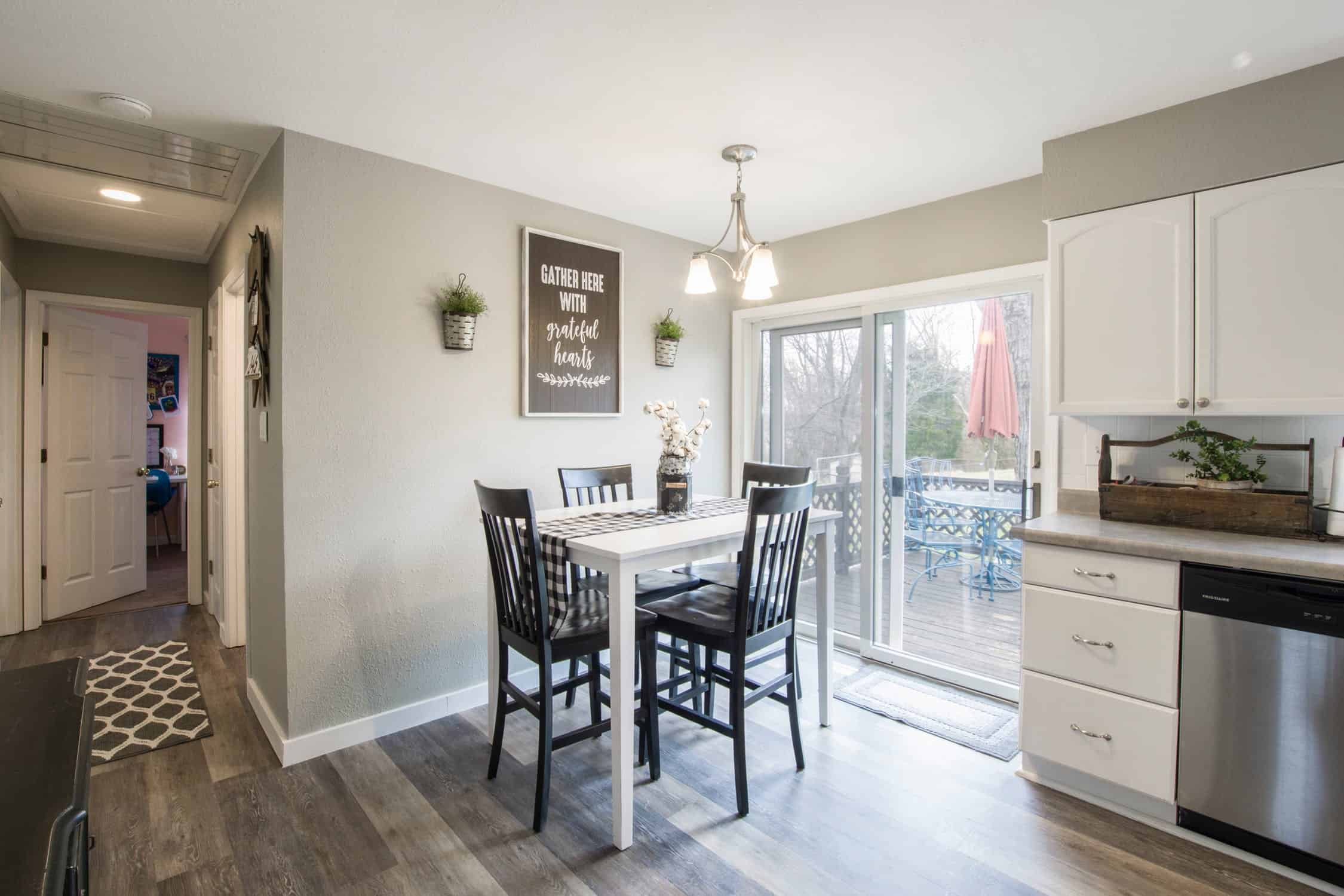Are you one of those people who have lived with a sticky sliding patio door for years? Honestly, the Captain was in that boat too (back when I was just an Ensign).
It’s always been easy for me to let these little things slide when there are so many more important things on my old to-do list.
Once I learned how easy it is to fix, I always make sure to take the 2 minutes and get my door moving again! But first, I had to learn how.
So, how do you make your patio door slide easier?
Why Is Your Sliding Glass Patio Door Sticking?
There are actually quite a few reasons why your patio door may stick.
Sliding glass patio doors are relatively simple machines, but they contain a few moving parts. Failure at any one of these locations can cause it to stick (or prevent it from opening at all).
In order of likelihood, your sticky problem can exist due to the following reasons:
- Debris or dried liquid blocking the tracks
- Faulty or broken rollers
- A misaligned sliding door installation
- A wall that has settled
First check your sliding door tracks for any debris or dried liquid. If you see any, clear the debris and wash the tracks with warm, soapy water.
Be sure to check between the screen door and the glass! If you’re confident that there’s nothing else blocking the sliding patio door track, then it’s time to lubricate!
Which Lubricant Should I Use For Sliding Patio Doors?
You might be tempted to reach for cooking oils, essential oils, or anything slick that might smell good.
I want my interior space to have a pleasing aroma too, but lubricants like this naturally collect dust and dirt particles. Using something like the above to make your patio door slide easier might actually be counter-productive!
So then, how should you lubricate a sliding glass door? You should only use a silicone-based lubricant. Many folks will recommend you use WD-40. This will technically work, but WD-40 is a petroleum based lubricant and will have the same dirt/grime collection issues as the other oils above.
If you already have a silicone-based lubricant you like, that’s great. Otherwise, here are a few of my recommendations:



How Do I Fix Broken Sliding Patio Door Rollers
If you’ve cleaned and lubricated your patio door tracks, the next place to look is the rollers.
There’s a chance that debris or some other blockage has caused the rollers to stop functioning properly. Be warned, this is labor-intensive work that requires taking both your stationary patio door and your sliding patio door off.
If you’d rather not open that can of worms, I recommend you find a licensed insured professional.
If you’re confident in your ability to safely remove, examine, clean, and re-install a patio door, power to you! The Captain hasn’t created any content specifically for this, but the folks at SWISCO have put together a nice guide on how to replace a sliding patio door.
ou can follow their guide and instead of installing a new one, you can clean the rollers at the bottom and put the same one back on.
What Do I Do If My Patio Door Is Aligned Incorrectly?
At this point, we examined the sliding door rollers and confirmed that they’re clean and free of debris. Don’t rush to put your door back on yet! We have two remaining causes for why you might have a sticky sliding patio door.
- The patio door was misaligned
- The wall where the patio door was installed has settled
I have good news. If the patio door was misaligned, you can simply align it correctly when you re-install it!
You should also be able to tell via visual inspection whether or not the wall had settled. Two tell-tale signs include cracked drywall and nail-pops. You can also solve this issue while you have the door off, although the process is a bit less straightforward and requires much trial and error.
If the Captain were in your shoes and your door was still sticking after re-installing, I’d recommend calling a professional to help your patio door slide easier. There’s a limit to what we can do by ourselves!

